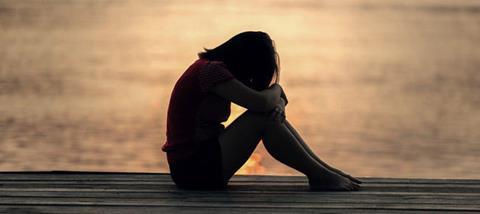
A survey of 11,000 children found 22 per cent of the girls and 9 per cent of the boys said they had hurt themselves on purpose in the year prior to the questionnaire. This follows NHS data released this month that showed that in the last 20 years hospital admissions for self-harm amongst teenage girls have almost doubled.
As a mother of a girl about to turn 13, who attends a school known to have high levels of self-harm amongst its pupils, reading these latest figures fills me with dread.
I’m not surprised, but extremely saddened by this news. With family members who have struggled with self-harm during their teenage years, this is a subject we have discussed many times, often asking: “What is it about life today that has made this issue so rife?” I certainly don’t remember it even being talked about when I was at secondary school.
A spokesperson from Childline commented on the figures: “Many children are being driven to self-harm as a way of dealing with the pressures and demands of modern-day life. Young people are crying out for help and more needs to be done to prevent them from reaching crisis point.”
Experts seem to agree that the combination of social media and increased pressure to perform at school are massive factors in the rise in self-harm. While issues such as body image and bullying are age-old, social media has provided them with a massive platform; teenagers often have no escape.
Interestingly, the figure for boys self-harming has not changed that much; while it has risen, it has only done so by five per cent in the last 20 years. When asked about this difference, Jon Goldin, vice-chair of the child and adolescent faculty at the Royal College of Psychiatrists, said he believed it was because girls are more sensitive to the effects of social media.
Research shows that adolescents who self-harm are at a greater risk of suicide, and the number of girls admitted for substance overdose has increased at an alarming rate too – more than tenfold: from 249 in 1997 to 2,739 in 2017.
While the Department of Health and Social Care pointed out that the NHS figures are not representative of individual patients, as some are admitted more than once, I would argue that there must be hundreds, if not thousands, more teenage girls that are self-harming without getting medical treatment (and perhaps completely undetected by anyone else). So the figures should certainly be a wakeup call for us all.
So what can we do?
While more money is apparently being poured into training staff in schools to provide mental health care to students more quickly, it is a sad truth that budget cuts mean less services in many vital areas.
I recently attended a meeting between parents of secondary school aged children and those that provide mental health care to students. Often the answer to parents’ questions was the professionals pointing out that their hands are tied due to budget and time constraints. So I am very glad to learn that the NHS is continuing to pilot a scheme to improve links between schools and mental health care services.
Because what is desperately needed is honest, supportive communication between parents, teachers and health care professionals. Drastic action is called for, as our teenagers are simply too precious for us to allow this worrying trend to continue. Young people need to feel safe enough to speak about what is troubling them – and parents, youth workers and other trusted adults have a vital part to play in supporting the teenagers in their lives.
As Rachel Gardner of Youthscape comments: “Many young people tell us that they feel painfully alone when dealing with their mental health. Isolation and loneliness are epidemic in youth culture, so the more that young people experience safe and supportive networks of kind people around them who have empathy and compassion and the willingness to listen without judgement, the more these young people will dare to believe that they will be heard and helped before they reach a point of crisis.
“Churches can play a powerful role in offering this supportive community, and now more than ever there are brilliant resources and training to help us be there when young people need support the most. Check out selfharm.org.uk, mindandsoulfoundation.org, kintsugihope.com”


































